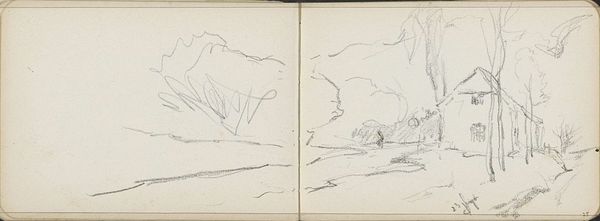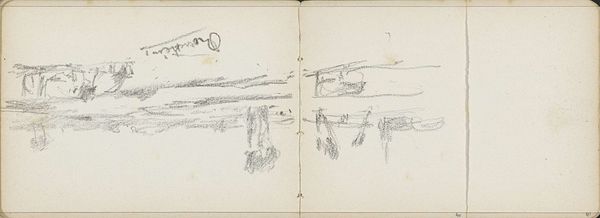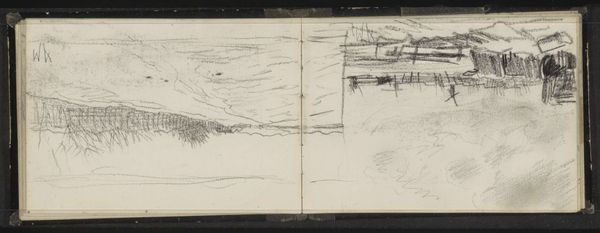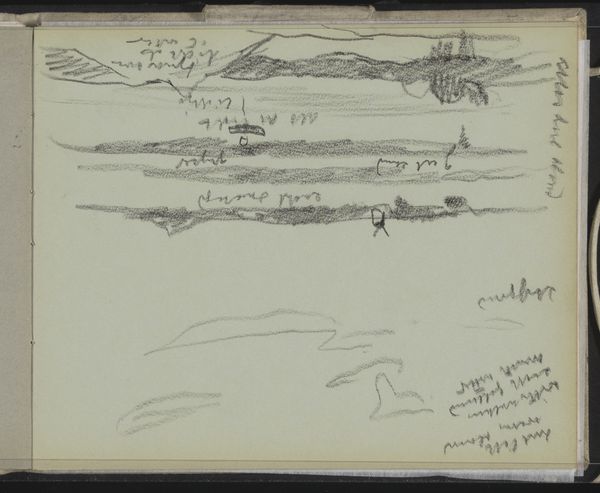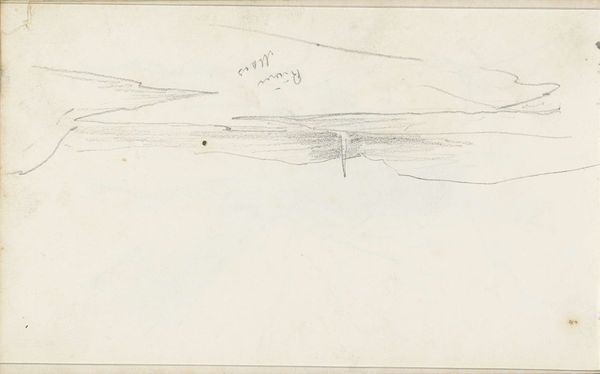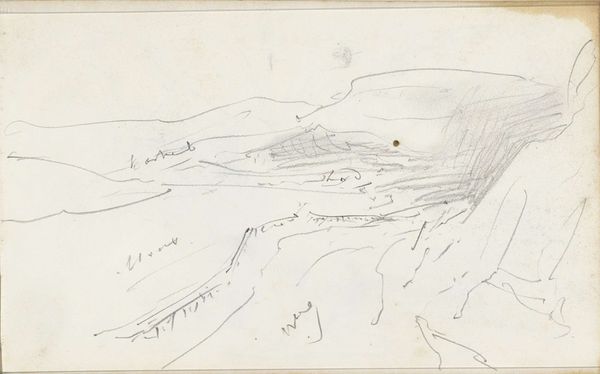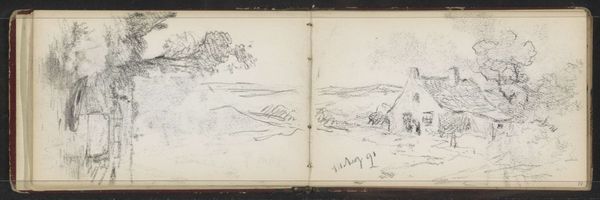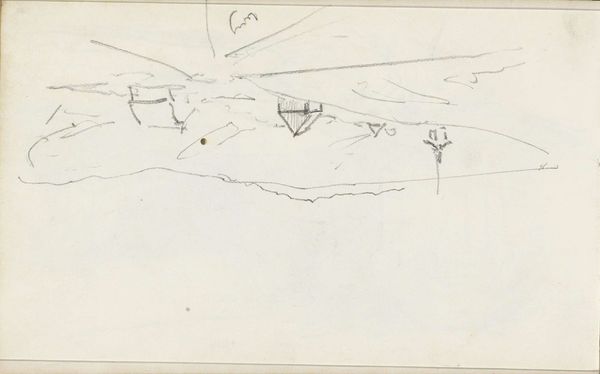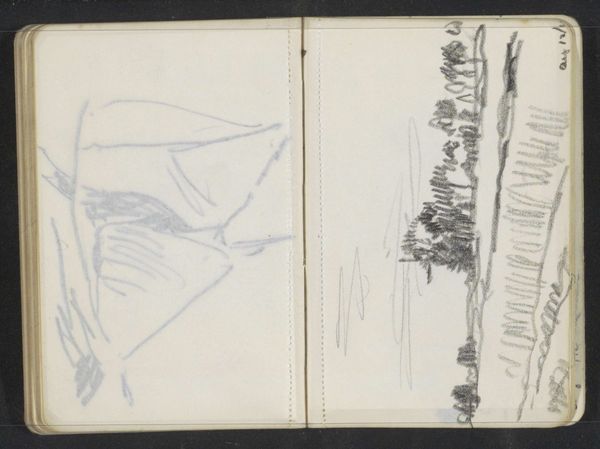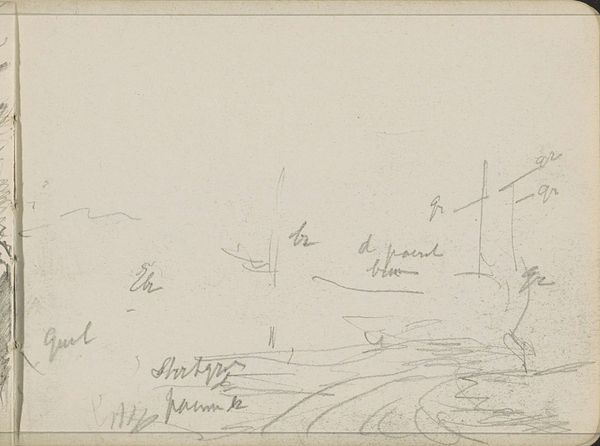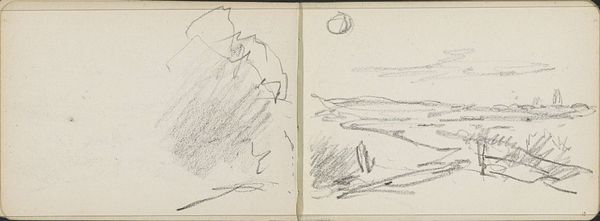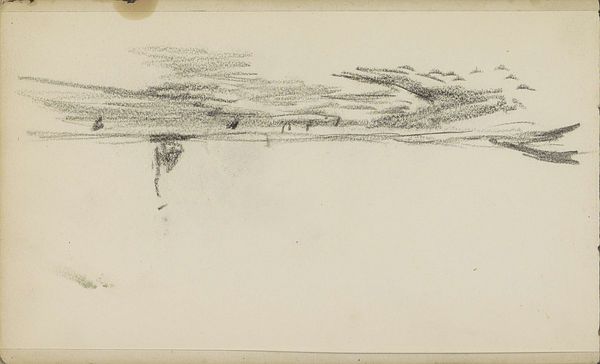
drawing, graphite
#
drawing
#
landscape
#
graphite
#
realism
Copyright: Rijks Museum: Open Domain
Editor: This is "Figuur op een dijk," or "Figure on a Dike," a graphite drawing by Willem Cornelis Rip, made sometime between 1866 and 1929. It feels unfinished, almost like a quick study. What catches your eye in this sketch? Curator: What strikes me is the deliberate lack of specificity. Rip offers a scene of labor and perhaps leisure, but avoids idealizing it. It invites us to consider the lived reality of those whose lives are intertwined with this landscape, not merely as picturesque figures, but as active agents. Consider the implications of a ‘dike’ – a space of both protection and potential constraint. Editor: Constraint, interesting. Can you expand on that? Curator: Dikes are built structures, meant to control nature. Who benefits from this control, and who bears the cost? The figure on the dike seems dwarfed by the landscape, raising questions about power dynamics between humans and their environment. Also, is this person walking away or towards us? Editor: That ambiguity makes it more thought-provoking. I initially just saw a landscape, but I’m now considering it in a social context. It shows a world in between land and water, a symbol of borders and social boundaries. Curator: Exactly! And think about how this connects to contemporary issues like climate change and coastal communities facing displacement. Rip, even in this simple sketch, is making us confront the ongoing tension between human ambition and natural forces. Editor: I see it so differently now. Thanks! It's really amazing to realize how much history can be packed into such a seemingly simple drawing. Curator: And how that history continues to resonate in the present! It pushes us to think critically about whose stories are being told and whose are being erased from the landscape.
Comments
No comments
Be the first to comment and join the conversation on the ultimate creative platform.
